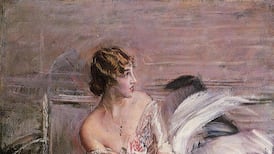If you’re still hoping to pick blackberries this autumn, you may need to hurry. According to folk tradition, today is the last day the fruit can be safely eaten, because tomorrow – September 29th – is Michaelmas.
And as everyone knows, that’s the date when the devil goes around stomping, spitting, or otherwise doing the dirty on blackberry bushes: just because, when St Michael threw him out of heaven after the failed leadership heave, it was in brambles that he landed.
Even if that didn’t happen, however, there is a some science to back up the belief that late-season blackberries are best avoided.
The fruit do tend to degenerate as autumn conditions set in. Then they become vulnerable to certain fungi, occasionally toxic.
In any case, the blackberry-picking of my youth – like Seamus Heaney’s a couple of decades earlier and further north – used to be in late August, before school returned.
Domestic use aside, our hope was always to sell a bucketful or two to the local jam factory, in return for pocket money.
What Heaney was up to, by contrast, I’m not sure. His poem on the subject speaks of hoarding blackberries in an outhouse “bath”, and of his annual disillusionment at revisiting this some time later to find “a fur, a rat-grey fungus, glutting on our cache”.
If I’d known his poem at the time, it would have confirmed our South Monaghan wisdom that blackberries were a cash, not a cache, crop. But perhaps they were experimenting with something else in Heaney country.
The bath somehow suggests alcohol production. And you can indeed make wine from blackberries, even – I’m told – whiskey; although in the latter case, I think, you need to have whiskey to begin.
My late father-in-law, a Tipperary man, used to create wine from all sorts of things, including elderberry, rose-hip, and rhubarb. But he drew the line at blackberries, for some reason. Maybe he feared that, in the words of Ian Paisley, it would be the "devil's buttermilk".
As for blackberry whiskey, that sounds even more diabolical. Apparently, it’s created on similar principles to sloe gin.
You put the fruit in a container, add sugar, then pour (cheap) whiskey over it, shaking the mixture daily until the sugar dissolves. After that you leave it for at least a year, before straining out the fruit.
It doesn't sound too promising to me, but a food and drink writer in the Guardian recommended it a while back. So if you try this at home and it doesn't work, blame him.
Speaking of Guardians reminds me that St Michael is, of course, an angel. As such, he is unusual in not merely being a religious celebrity but in having a name at all. Apart from Gabriel and Lucifer (and of course Clarence from It's A Wonderful Life), I can't think of any others.
Most angels are listed collectively, only by rank. They may all be famous for singing, but invariably in choirs, never solo. Michael’s unique fame is underlined by the fact that in church calendars, September 29th is devoted to him “and all the angels”.
Naturally, some traditions associated with Michaelmas accentuate the saint’s positive role rather than the devil’s negative one.
On Michaelmas Eve – today – women used to dig for “St Michael’s Carrots”, using three-pronged forks to represent his trident. If any carrots also turned out to be forked, that made them especially lucky.
But brambles had curative powers too, despite their devil’s intentions. No doubt it was their associations with the crown of thorns and the blood-like juice of the fruit.
Anyway, brambles were once thought to be able to cure such conditions as whooping cough, provided that they formed an arch, rooted at both ends. The affected child had to be passed under this three times (or in some versions nine), east to west, for the cure to work.
Another thing people used to do at Michaelmas was eat roast goose. And according to Brewer's Dictionary, the English version of this tradition is tied up with a popular story set on September 29th, 1588, involving Queen Elizabeth I. Dining on goose then, she raised a toast of "Death to the Spanish Armada": no sooner had she said which, than a messenger arrived to announce that the invading fleet had been dispersed by storms.
So the queen declared that henceforth, a Michaelmas goose would commemorate the victory. But so much for folklore. As Brewer's adds, the story is ruined by the fact that the Armada was scattered "in July". Neither St Michael nor the devil could be implicated.











